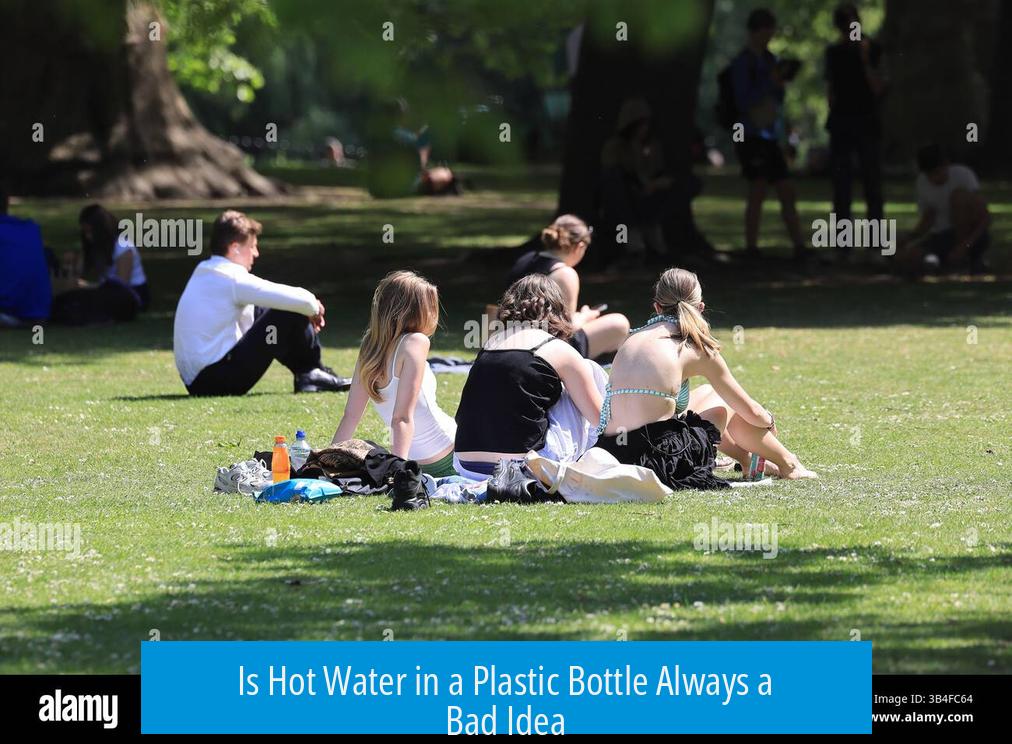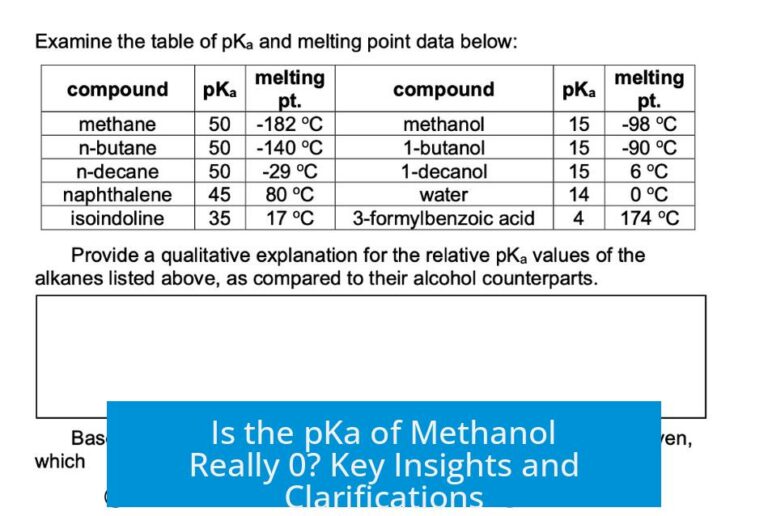Is Hot Water in a Plastic Bottle Always a Bad Idea?

Using hot water in a plastic bottle is generally discouraged due to chemical leaching and structural risks. Plastics can release harmful substances when heated, which may pose health concerns. Furthermore, the bottle itself may degrade and lose integrity under heat, raising safety issues. However, the full answer depends on the plastic type and exposure conditions.
Why Hot Water and Plastic Don’t Mix Well
Most plastic bottles are made from polyethylene terephthalate (PET). These are designed for cold or room-temperature liquids. When hot water is poured inside, the heat can soften the plastic.
- This softening accelerates chemical breakdown.
- Harmful compounds may leach into the water.
- The bottle can warp, crack, or burst due to internal pressure from steam and expansion.
Plastic bottles are not engineered for sustained exposure to high temperatures. Repeated heating worsens structural degradation, increasing the risk of leakage or failure.
Chemicals Leached When Using Hot Water
Two chemicals commonly associated with plastic bottles are bisphenol A (BPA) and antimony.
- BPA: A chemical used in polycarbonate plastics, linked to reproductive, neurological, and immune system effects. Studies associate BPA exposure with metabolic disorders, asthma, and behavioral changes in children.
- Antimony: Used as a catalyst in PET production and antimicrobial agent. It can leach into water, especially when heated, and has toxicity concerns including skin and eye irritation.
When hot water contacts plastic bottles, BPA and antimony may migrate into the liquid. This leaching can change taste and, more importantly, increase potential health risks.
In addition, microplastics, tiny particles less than 5 millimeters, can break off from plastic bottles, entering both bottled water and human bodies. Heat likely increases their release.
The Role of Plastic Types and BPA-Free Alternatives
Not all plastics behave the same with hot liquids. For instance, plastics labeled with numbers 1, 3, 6, and 7 often contain BPA or phthalates and should be avoided with hot water.
| Plastic Number | Common Use | Heat Resistance and Safety |
|---|---|---|
| 1 (PET) | Single-use bottles | Not heat resistant; leaches chemicals under heat |
| 3 (PVC) | Food wraps | Contains phthalates; avoid hot liquids |
| 5 (PP – Polypropylene) | Reusable containers | High heat resistance; safest option for hot liquids |
| 6 (PS) | Disposable cups | Contains styrene; avoid heating |
| 7 (Other) | Polycarbonate and mixed plastics | May contain BPA; avoid hot liquids |
BPA-free plastics may reduce BPA exposure but can still contain other chemicals that leach under heat. Polypropylene (PP, plastic #5) is a safer plastic for hot water, as it resists high temperatures and chemical leaching.
Structural and Safety Concerns

Aside from chemical risks, hot water pressure may deform plastic bottles. Expansion of water vapor inside increases pressure.
- Plastic warping can cause spills or burns.
- Repeated exposure weakens bottle walls, risking rupture later.
- Deformed bottles may create leaks or contamination pathways.
Plastic bottles exposed to heat risk losing their shape and function. Using containers designed for hot liquids is safer. Stainless steel or glass bottles tolerate heat better and do not release chemicals.
Environmental Implications
Repeated use of disposable plastic bottles worsens environmental harm. Around 50 billion single-use bottles are consumed yearly in the U.S., with many polluting ecosystems for centuries.
The urgency to reduce plastic waste aligns with avoiding plastic for hot liquids that shorten bottle lifespan. Plastics kill marine wildlife after entering oceans. Choosing reusable, heat-safe alternatives lessens plastic pollution.
Common Myths about Cancer and Hot Water in Plastic
Despite concerns, there is no solid scientific evidence supporting that hot water in plastic bottles directly causes cancer. The chemicals implicated do not include dioxins, which are highly carcinogenic.
The main issue remains potential endocrine disruption and other chronic health effects, rather than direct carcinogenicity. Risk varies by exposure level, plastic type, and temperature.
Key Takeaways
- Hot water in typical plastic bottles causes chemical leaching, risking health through BPA and antimony exposure.
- Plastic bottles soften and deform when exposed to heat, risking spills and breakage.
- BPA-free plastics reduce some risks but may still leach other chemicals under heat.
- Plastic #5 (polypropylene) resists heat and is safer for hot liquids.
- Using stainless steel or glass bottles for hot water is safer and more sustainable.
- Microplastics can increase with heat exposure, adding to health concerns.
- Environmental harm from disposable plastic bottles is severe and ongoing.
Is Hot Water in a Plastic Bottle Always a Bad Idea?

The straightforward answer is: not always, but usually yes, it’s better to avoid it.
Let’s dive in. You’re probably wondering, “Can I just pour hot water into my trusty plastic bottle and be done with it?” The truth is, the safety and impact of this seemingly simple action depend on several factors — the type of plastic, the bottle’s design, and what you plan to do with it afterward.
Why The Fuss About Hot Water and Plastic Bottles?
Many plastic bottles are made from polyethylene terephthalate (PET), a thermoplastic that isn’t built for hot liquids. When you pour hot water, especially near boiling point, into these bottles, two main things happen:
- The plastic can begin to soften or deform.
- The plastic can release chemicals like bisphenol A (BPA) or antimony into the water.
Even though the US regulates these materials to limit harmful components and bans BPA and phthalates in food contact items, heat exposure can still speed up chemical leaching. While this leaching is usually minute, it’s not non-existent.
So, Is It Unsafe to Drink Hot Water From a Plastic Bottle?
Not all plastic bottles are created equal. Standard, single-use PET water bottles are not designed for hot liquids. If you heat water and pour it into these bottles, the plastic may warp or “shrinky-dink” as some call it. Picture a bottle suddenly morphing into an unappealing crumpled mess that spills boiling water everywhere — definitely a safety hazard.
On the other hand, some plastics are made from more heat-resistant materials, like polypropylene (PP), labeled as plastic #5. This type withstands heat better and does not readily leach harmful chemicals, making it a safer option for hot liquids.
Still, if your bottle isn’t marked microwave-safe or suitable for hot liquids, it’s wise to steer clear. You wouldn’t want a hot water bottle that might suddenly become a hot plastic soup, right?
What About Using Plastic Hot Water Bottles for Skin Contact?
If you’re thinking about a reusable “hot water bottle” you put on your stomach or back to soothe aches, here’s some good news. These bottles typically contain hot water but don’t pose a significant risk of chemical absorption through your skin.
Skin acts as a pretty great barrier. Tiny bits like microplastics or toxic chemicals don’t readily seep through it, especially without mechanical forces like chewing or biting. So, lying on a plastic hot water bottle generally is harmless. A few anecdotal examples even include people refilling plastic bottles with hot coffee for years without any ill effects.
What About Microplastics? Are Hot Water Bottles Leaching Tiny Bits Every Time?

Yes, pouring hot water into plastic bottles might slightly increase the release of microplastics — small plastic fragments less than 5 millimeters wide. But here’s the kicker: microplastics from your water bottle are a minor source compared to bigger culprits like tire wear (responsible for about 78% of ocean microplastics) and discarded plastic waste (around 69-81%).
Think of your plastic water bottle as a tiny drop in a vast plastic ocean. That doesn’t mean we shouldn’t care — on the contrary, every bit adds up — but your bottle’s microplastic contribution to the environment is pretty low.
Measuring these minuscule emissions is tricky. Scientists point out that microplastics form by physical breakage, like polymer chains pulling apart, not by chemical reactions. Since heat can make plastics more flexible or brittle, it raises the chance of tiny bits breaking off. But to date, no definitive studies show boiling water into a plastic bottle is a critical source of microplastics.
Health Risks: Should You Worry About BPA or Antimony?
BPA and antimony are the main villains often blamed in hot plastic bottle controversies.
- BPA (Bisphenol A): Linked with reproductive issues, immune system problems, neurological disorders, and even obesity. It potentially affects children’s behavior too.
- Antimony: A heavy metal present in some water bottles to prevent bacterial growth. Exposure can cause mild skin or eye irritation if inhaled in dust form.
When plastic heats up, it may leach these substances into liquids. However, regulations have driven most manufacturers to eliminate BPA from water bottles, especially in the US. Even BPA-free bottles may contain other chemicals, but their health risks remain relatively minimal under average use.
Drinking hot water straight from single-use plastic bottles regularly probably isn’t the best practice, but occasional exposure probably won’t send you into an early grave. Your body can handle small exposures without drastic issues according to current scientific understanding.
Plastic Types: Know Your Numbers Before Drinking Hot Water
Plastics come with handy recycling numbers that hint at their composition and heat resistance:
| Plastic Number | Type | Suitability for Hot Water | Examples |
|---|---|---|---|
| 1 | PET (Polyethylene Terephthalate) | No — softens and releases chemicals | Single-use water bottles |
| 2 | HDPE (High-Density Polyethylene) | Moderate — good temp resistance | Milk jugs, detergent bottles |
| 3 | PVC (Polyvinyl Chloride) | No — melts easily | Plastic pipes, some food wrap |
| 4 | LDPE (Low-Density Polyethylene) | Not recommended for hot liquids | Plastic bags, shrink wrap |
| 5 | PP (Polypropylene) | Yes — most heat-resistant and safe for hot food/drinks | Medical syringes, coffee cups lids |
| 6 | PS (Polystyrene) | No — melts and warps easily | Disposable cups, Styrofoam |
| 7 | Other (various, some polycarbonates) | Generally avoid, may contain BPA | Multi-layer containers |
So, to keep your beverages safe and tasty, avoid drinking hot liquids from plastics 1, 3, 6, and 7. Stick to PP (#5) if you want to use plastics for hot drinks.
Environmental Angle: Single-Use Bottles Are the Real Villains
A staggering 50 billion single-use plastic water bottles are consumed annually in the United States alone. The vast majority end in landfills or, worse, in oceans — where they haunt marine wildlife for up to 450 years. Over 100,000 marine animals die annually due to plastic ingestion or entanglement.
So, beyond your personal health concerns about hot water in plastic bottles, the environmental impact of disposable plastic bottles is a huge challenge. Choosing reusable water bottles made of stainless steel, glass, or silicone can reduce this plastic tsunami and help save our oceans.
Summary — The Bottom Line

- Pouring hot water into regular single-use plastic bottles (PET) is not recommended. They warp easily and may leach chemicals like BPA and antimony.
- Occasional skin contact with plastic hot water bottles — like lying down on one to soothe your back — is generally harmless, with minimal chemical absorption.
- Microplastics may be released more with hot water exposure but compared to other sources (tires, waste), their environmental impact from bottles is minor.
- Plastic #5 (polypropylene) offers the best heat resistance and lowest risk for chemical leaching, making it safer for hot liquids.
- Avoid plastics #1, #3, #6, and #7 for hot liquids — these contain more harmful substances or soften easily.
- US regulations reduce BPA risks, but lingering concerns about other chemicals and the physical breakdown of plastic remain.
- Choosing alternatives like stainless steel or glass bottles when handling hot water is a safer and greener choice.
Practical Tips to Stay Safe and Eco-Friendly
- If you love hot drinks on the go, get a BPA-free, microwave-safe, and heat-resistant bottle made of polypropylene or stainless steel.
- Avoid pouring boiling water directly into any plastic bottle; let it cool to below 70°C (158°F) first.
- Steer clear of reheating water directly in plastic bottles unless labeled microwave-safe.
- Recycle your single-use plastic bottles responsibly and consider swapping them for reusable alternatives.
- Spread the word! There’s a lot of misinformation about plastics floating around. Share facts, not fears.
Wondering About Your Favorite Bottles?
Here’s a fun little challenge: next time you pick up a plastic bottle, look for the little recycling number at the bottom. Does it say 1? 5? Or 7? If it’s a #5, you can be a bit more confident about its heat resistance. If not, cool your drinks down before you pour.
Remember, hot water in a plastic bottle isn’t black and white — it’s a nuanced story of chemistry, safety, and environment. But a simple rule of thumb can save you a lot of trouble: When in doubt, heat-resistant and BPA-free polypropylene or non-plastic options win the race every time.
Final Thoughts
In the end, you won’t melt into a puddle after using a hot water bottle made from a typical plastic. But consistently drinking hot water from non-heat-stable plastics might not be the best choice for your health or taste buds. The plastic leaching debate is complex, involving chemical physics and biology, but careful selection and mindful habits can keep you safe.
So next time you’re tempted to fill your trusty single-use bottle with steaming water, maybe pause. Instead, flaunt that shiny stainless steel thermos. Your body, your tastebuds, and even the fish in the ocean will thank you.
Is it safe to put hot water in any plastic bottle?
Most plastic bottles are not made for hot liquids. Heat can cause them to soften and release chemicals like BPA and antimony into the water. Some bottles labeled BPA-free may still leach other harmful substances when exposed to hot water.
What health risks come from chemicals leaching into hot water in plastic bottles?
Chemicals like BPA may affect reproductive systems, immune function, and brain health. Antimony exposure from heated bottles can irritate skin and eyes. Long-term effects include links to diseases like cardiovascular problems, obesity, and childhood asthma.
Can certain plastics handle hot water better than others?
Yes. Polypropylene (#5 plastic) is the safest plastic for hot liquids because it resists heat and is less likely to leach harmful chemicals. Still, most common plastics used for water bottles degrade under heat and aren’t suitable for hot liquids.
Does storing hot water in plastic bottles damage the bottle itself?
Heat weakens plastic bottles by causing warping, melting, or cracks. Pressure from hot water inside can force liquid out or lead to bursting. Over time, the bottle’s structure degrades and becomes unsafe to use again.
Are cancer risks from hot water in plastic bottles scientifically proven?
No scientific evidence confirms that chemicals from plastic bottles cause cancer. However, some plastics contain endocrine disruptors linked to tumors in animals, so avoiding plastics numbered 1, 3, 6, and 7 is recommended for hot liquids.





Leave a Comment